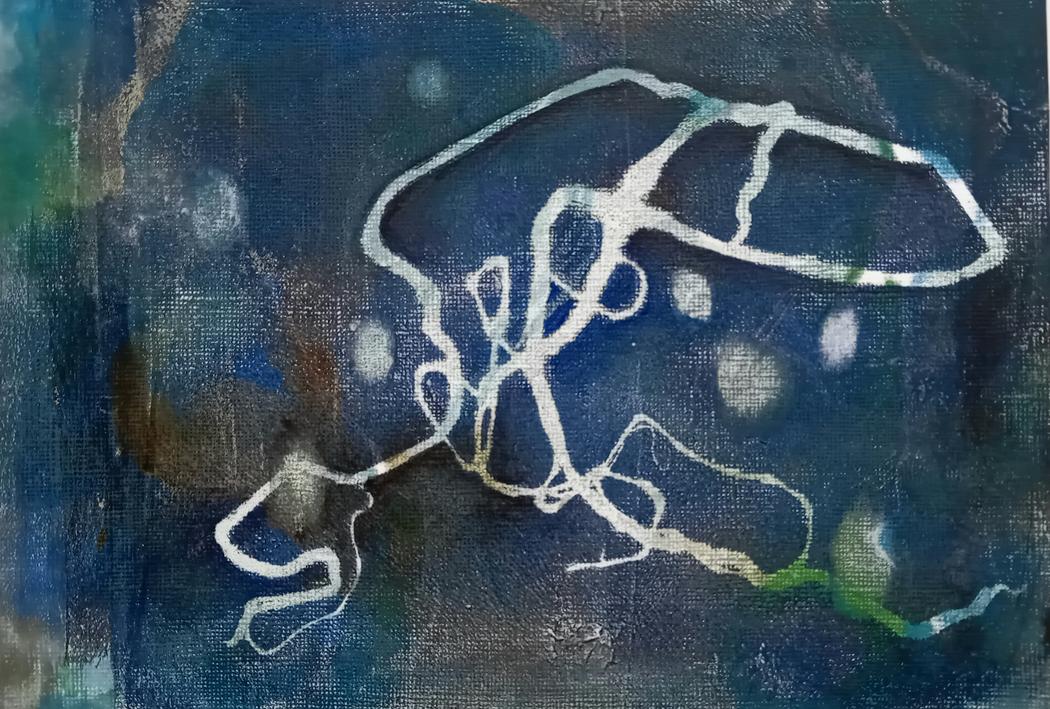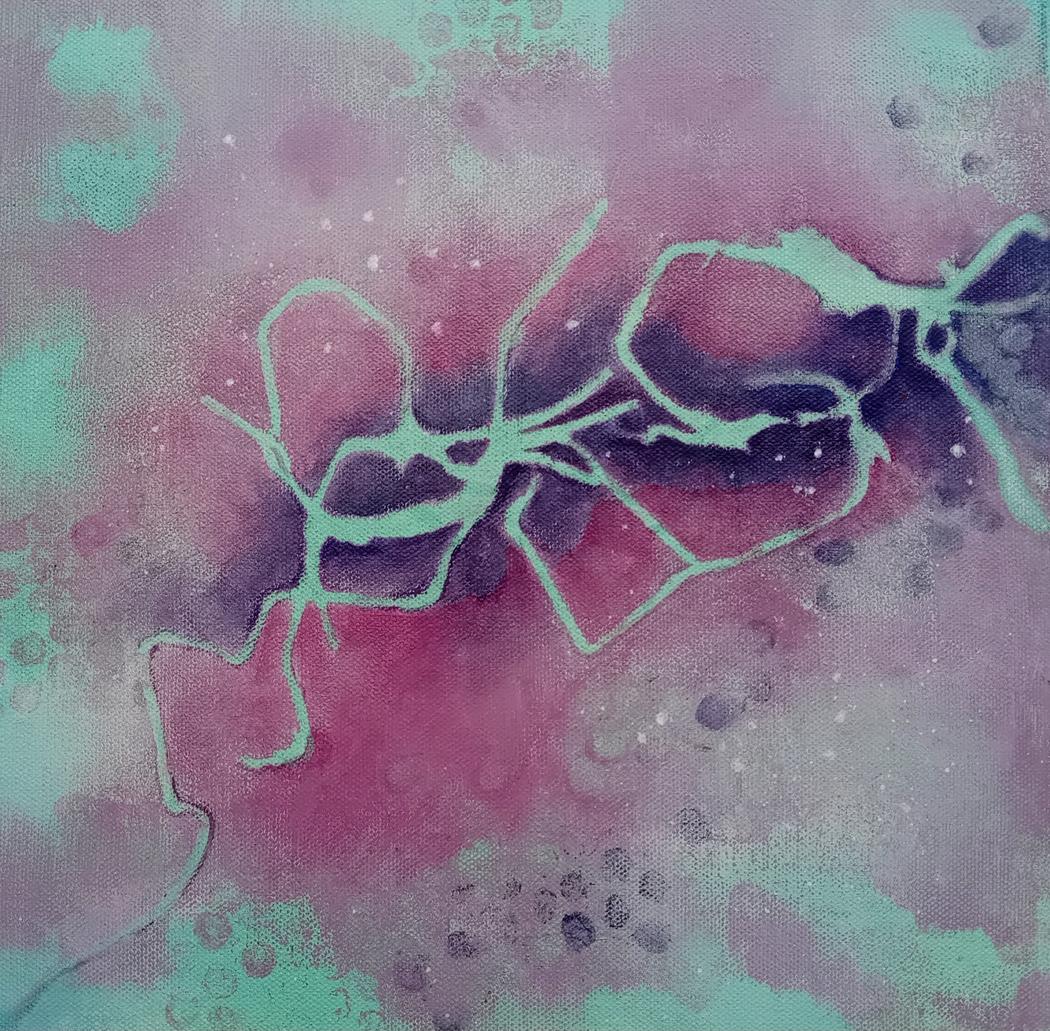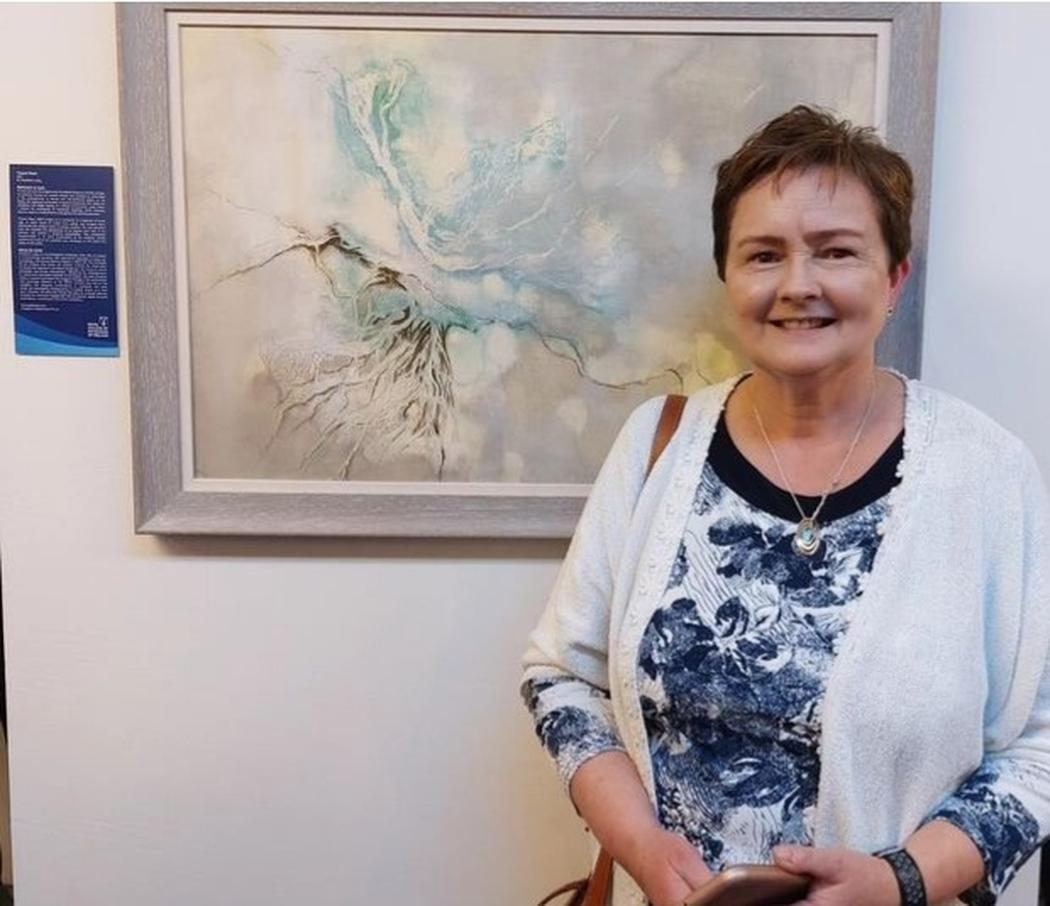Geraldine Leahy
What initially drew you to focus on the coastal landscape and environmental themes in your work?
I initially worked as a primary teacher and I always particularly enjoyed teaching (and learning) about the natural world. Much later I returned to education to study for a degree in art. In the earlier stages of my studies, I found myself drawn to depicting landscapes and natural, organic forms. I was also very interested in ideas around palimpsests, both in historical/archaeological terms and also as a technique in contemporary art. When I had to work on a parallel project of my own choosing, I decided to investigate one of my local beaches where several severe weather events had resulted in a significant loss of sand dunes due to coastal erosion. Working with this subject, I could incorporate both my interest in the natural world and that of palimpsestic notions of layering, erasing, concealing and revealing.
Then, in the final two years of my degree, I returned to this subject for my Major Project. Regular visits to the beach revealed a surfeit of natural and manmade debris, resulting from the subsidence of both the sand dunes and several coastal dwellings. I was intrigued by how these materials were entangled, sometimes to the point where it was difficult to differentiate between them. Having read Jane Bennett’s Vibrant Matter: A Political Ecology of Things (2010), I realised that this debris possessed a kind of energy – a vibrancy that can inform both the artist and the viewer about the catastrophic state of much of the coastal environment. I was inspired to harness this vitality in my work.
Can you describe your process of collecting materials from the shoreline? Are there any specific criteria you use when choosing what to include?
When visiting the beach, I look out for materials that are suitable for monoprinting. These have to be fairly small and flat, so lengths of plastic and rope are particularly suitable and are (unfortunately, in environmental terms) extremely plentiful. I mostly collect manmade debris, but occasionally will pick up natural items such as small amounts of detached dune grasses or seaweeds that are lying around, making sure not to pull anything out of the fragile sand dunes.
While it is not possible to monoprint larger objects, I nevertheless record them in photographs and drawings. These larger materials also have an influence on my work, even though I am not using them directly in the creation of the paintings. Recalling Jane Bennett’s ideas about the dynamic force that is inherent in ordinary objects, (Vibrant Matter: A Political Ecology of Things (2010), I regard these larger items as vibrant materials that exist on the sand, a constant reminder of the damage that has been done to the environment. These materials are in a continual state of flux at the mercy of the weather and will no doubt have shifted or disappeared when I next visit the beach, so it is important to record them when they are there.
 Geraldine Leahy | Manufactured Seahorse (Found Rope) | 2024
Geraldine Leahy | Manufactured Seahorse (Found Rope) | 2024
Your paintings blend monoprinting with acrylic and gouache – what role does layering play in your work both visually and conceptually?
Both layering and erasing are very important in my work. The initial layer usually consists of a neutral coat of paint, often applied with a roller and with patches partially erased. Erasure is important because it signifies the wearing away of the coastline due to erosion. The monoprint comes next, where I visually embed pieces of debris, such as strands of plastic, into the painting surface. I like the unpredictability of this layer because it represents the precarious state of the environment, where things happen that we can’t always exactly predict, understand or know how to respond to. Subsequent layers in acrylic and gouache involve my responses to these initial layers, where I decide what aspects of the painting to develop, what to erase or hide and what to reveal.
So, visually, the layering recreates a sense of the entrenching of the entangled materials in the sand and the erasing signifies the wearing away of the dunes, sometimes resulting in the emergence of other deeply embedded debris. Conceptually, the technique represents mankind’s continual onslaught on the environment, where human-induced climate change is adversely affecting our coastline.
Many of your forms appear abstract but evoke manmade debris. How do you navigate the balance between abstraction and environmental commentary?
My found materials possess the ability to mutate into interesting forms. Throughout the monoprinting and painting processes, manmade items adopt natural characteristics. This mutation seems to me to be a confirmation of the entanglement of natural and manmade materials and is an indication of the disastrous effect mankind has had on the coastal environment.
All abstract art invites close examination and analysis. The viewer looks for meaning in the title of the piece or in the context, forms, textures and colours. For example, one of my paintings is titled, Manufactured Seahorse (Found Rope). While not a completely straightforward statement, this is nevertheless a helpful clue as to what the piece is about. In terms of the context of the painting, the environment and climate change will hopefully come to mind. So it is possible to produce abstract art that can effectively comment on environmental concerns. By producing art that is attractive and intriguing, I hope to entice the viewer to really want to look at each piece and discover the meaning and intention behind it.
 Geraldine Leahy | Strands | 2025
Geraldine Leahy | Strands | 2025
What has been the most striking or disturbing item you’ve found on the beach and how did it influence your work?
On one of my earlier visits to the beach I came across an unusual sight – a large piece of corroded metal shaped like a creature’s clenched jaw, entangled with a discarded orange knitted garment and fragments of seaweed. It looked like a strange sea creature lying on the sand. I was fascinated by both the entanglement and the mutability of these materials, which had transformed from ordinary objects into what seemed like a sinister portent of environmental disaster. This same sense of accidental mutability exists in my paintings, where manmade debris often adopts organic characteristics throughout the monoprinting and painting processes.
How do you see your work functioning within the conversation around climate change and ecological awareness?
There are a great many artists today who have become activists for our endangered planet. They are highlighting various aspects of the problems we face, from rising sea levels to the proliferation of plastic in our rivers and oceans. Their approaches are varied, and the work they produce can range from the visually beautiful (e.g., Ellen Alt’s (b.1954) depictions of melting glacial ice) to utterly shocking (e.g., Chris Jordan’s (b.1963) photographs of albatrosses who have died from ingesting plastics).
Not every viewer wants to look at provocative artwork. Some might even be discouraged completely from engaging with work that is ugly or unpleasant. For this reason, I take a subtle approach to highlighting environmental concerns. By creating intriguing, often attractive pieces, I aim to entice the viewer into a deeper reflection of their place in the natural world. The viewer has to look carefully to see what is going on in my work, reflecting on both the title and the appearance of each piece. I hope that the time they spend doing this will encourage them to become more ecologically aware and to consider how they might change their behaviour in favour of the environment. Awareness and understanding of the problem have to come first, and then, hopefully, action.
 Geraldine Leahy | Plastic Dispersion | 2024
Geraldine Leahy | Plastic Dispersion | 2024
How important is it for you that viewers understand the environmental urgency behind your work?
At this critical moment in time, it is essential that we all work together for a more sustainable world. Therefore, it is very important for me that viewers come to an understanding of what my work is about. My subtle, abstract approach means that they might have to work a bit harder to understand the paintings. However, I hope that the attractiveness of the work will entice viewers to give the paintings the time they need to reveal themselves and will also remind them that our world is a beautiful place that needs our care and attention. Hopefully, then, viewers will come to an understanding of what the work is about and turn awareness into action.


Leave a Reply
You must be logged in to post a comment.